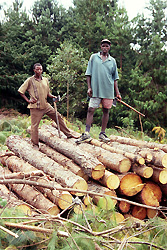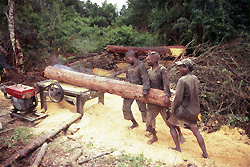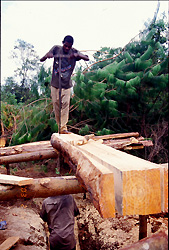(3) From Jan. 15, 2005 to Feb. 15, 2005, I conducted fieldwork in Kifanya Village, Njombe District in the Iringa Region of Tanzania. In recent years, the Bena people have planted black wattle trees (Acacia mearnsii) to use as charcoal and pine trees (Pinus patula) for timber on fallow hillside fields. They fell and use these trees after 10 to 20 years, and burn the remaining branches and leaves, making cultivation possible with little or no chemical fertilizer. Through my research, (I) I elucidated the historical relations of tree planting, lumbering and slash-and-burn cultivation. And (II), I collected soil samples from various stages of the fallow and cultivation process from hillside fields, in order to analyze annual changes in soil fertility resulting from the growth of trees and burning of the fields.
Based on these findings, I will evaluate how the changes in the Bena cultivation system relate to changes in their society. |



 21st Century COE Program
-Aiming for COE of Integrated Area Studies-
21st Century COE Program
-Aiming for COE of Integrated Area Studies-